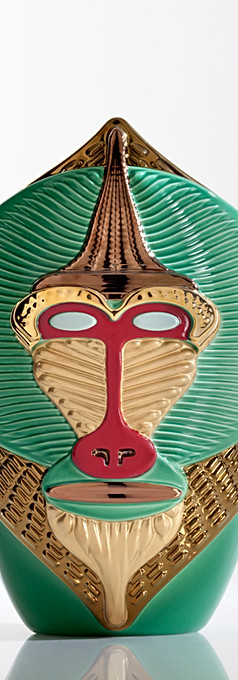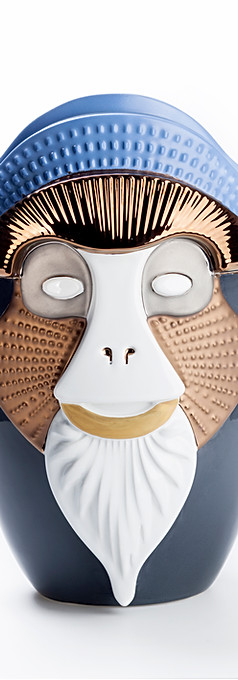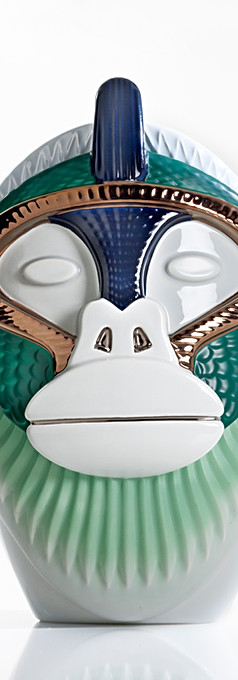Milan Design Week can be a real treasure hunt. Choosing what to see is no easy task, so we decided to start with the help of the Politecnico di Milano’s Design System — the School of Design, the Department of Design and POLI.design, which take part in various events with the aim of highlighting the projects and creative processes of our students, the true stars of our university: an opportunity to discover your Politecnico outside the 'walls' of the institution. You can find a guide (not exhaustive, that would be impossible), here.
While waiting for these six intense days, from 17 to 23 April, we also had a chat with Politecnico alumna and designer Elena Salmistraro, one of the most important figures in international contemporary design, to (try to) create a 'pocket guide' to the 61st edition of the Fuorisalone. Even for her, it is not easy to select the most interesting places to see, given the possibilities the Fuorisalone offers. She tries anyway: "Alcova is all about innovation, and it is definitely a place to visit, also because it gives ample space to experimentation," she begins. Founded in 2018, Alcova is a touring platform for independent and sustainable design that this year, in its fifth Fuorisalone participation, is hosted by the former slaughterhouse in Porta Vittoria, at Viale Molise 62 (which could be the next big thingin Milan, following the expansion of NoLo). Here we also find an old acquaintance of the editorial staff, designer Matteo Ragni.
"The Brera Design District," adds Salmistraro, "is also an well-established space, and not to be missed”: Brera, with its mysterious alleys and squares full of light, is hosting more than 200 events and installations this year. Between events, we recommend a relaxing break at the Botanical Garden, where you can also find designer and Politecnico architecture graduate Italo Rota. Then she accompanies us, metaphorically, through the beautiful cloisters of the University of Milan, which, by now a tradition, host numerous conceptual and interactive installations. Keeping with the 'Poli' theme, here you will find Amazon's The Amazing Playground, featuring Stefano Boeri Interiors.
Our tour with Salmistraro (which is only one of a myriad possible routes) ends in the place that feels most like home, inextricably linked to the history of the Fuorisalone: the famous Quadrilatero, which needs no introduction. "This year, Tortona is back in vogue. Among many events, it will also host an exhibition by Giulio Cappellini in which I am also participating."
Salmistraro tells us how she experienced Design Week as a student active in the Fuorisalone, going on to become a leading figure in the Salone itself. "When I started studying Industrial Design at the Poli, I looked forward to the Fuorisalone with great enthusiasm and tried to experience all the events taking place in the Via Tortona area, actively getting involved by handing out tickets and magazines. For me, the Fuorisalone was the Salone." What drove her was above all the curiosity to observe new techniques and materials at close quarters, but also, especially 'as a grown-up', an opportunity to create new contacts and collaborations. "Every age has its season," she explains. In fact, Elena won the prize for 'Best Emerging Designer at the Salone del Mobile' in 2017 with I vasi dei Primati, establishing herself as a designer against the mainstream at a time when minimalism was definitely in fashion. It was a risk, but it all ended well: "You can't imagine the queue that formed at the stand to see these vases!. I went from fear of failure to seeing my name on the stage as a prize winner. I can honestly say that I don't even remember what I said in my acceptance speech, but it was the most amazing feeling."






Primates, Ceramic vases for Bosa by Elena Salmistraro. Photo By: Tiziano Rossi. Credits: www.elenasalmistraro.com
During the six-day Design Week 2023, our Alumna will have to divide her time between the Salone and the Fuorisalone. It is hard to count the number of projects that host her work, but we will highlight two of them. She has worked with Tai Ping Carpets, a specialist French carpet maker, wth an exhibition in the Brera Design District, in the Fuorisalone: "It is a collection of six carpets, which I have called 'Legami' (Ties), created using many different techniques combined: like a sampler of all possible processes that recreate these interwoven elements, forming knots that are meant to represent human bonds. For Design Re-Evolution, Interni's installation in the Statale area, she instead collaborated with Hines on a digital installation on the Torre Velasca, which is still under renovation. A unique opportunity to see this historic Milanese landmark in a new light. And this is precisely one of the main features of Milan Design Week: seemingly abandoned warehouses magically come to life and light, like modern magic pumpkins hosting not one Cinderella, but thousands of people.
True, you can't find a taxi, let alone a parking space, but it doesn't matter: it's better to walk and enjoy the setting, because for a few days, spaces open up that are usually closed, such as courtyards, luxurious lofts, industrial areas and historic buildings. If someone were to ask us what design is, we would say that it is the work to bring beauty into the objects and habits of everyday life, an arena in which technique, aesthetics and functionality meet. And, of course, the design capacity of the Politecnico. For Elena, the feeling is to all effects a function of the object and perhaps that is why she encapsulates the 'meaning' of the Fuorisalone in these few words: “For me, it represents the very life of Milan.” Always with great frankness, and indeed Salmistraro concludes: "The most important thing for me is that the companies I work with maintain a very high quality, so as to make my work easier."